Mark Funke has a passion for science fiction history. So when he acquires a rare artifact, like the original cover art for The Left Hand of Darkness, it’s akin to viewing a gleaming treasure, long sealed away.
“It’s wonderful,” says Funke, a bookseller based in Mill Valley. “This is the kind of material that we live for.”
His business is focused on selling documents and other archival materials; his main audience is university researchers and rare collectors. A painting is not his usual fare.
The cover’s literary significance is evident. Le Guin, who grew up in Berkeley, won the Hugo and Nebula awards for The Left Hand of Darkness, a 1969 novel that places an interplanetary envoy on a frozen, androgynous world. Cultural misunderstandings — and feminist explorations of gender, relationships and societal roles — ensue.

“When I talk to other LGBTQIA+ science fiction writers and people who are immersed in science fiction, they always point to The Left Hand of Darkness as a book that kind of showed them how expansive, how rich and how multilayered speculative fiction could be in its approach to gender and sexuality,” says Charlie Jane Anders, a San Francisco-based transgender science fiction writer, who wrote the afterword for the 50th anniversary edition of the novel.
But the cover art for the 1969 first edition of the novel has its own merit. Leo and Diane Dillon, the only artists to win two consecutive Caldecott Medals for the picture books Why Mosquitoes Buzz in People’s Ears and Ashanti to Zulu, are known for illustrating dozens of science fiction covers for celebrated authors like Le Guin.
The Dillons’ original painting, which will be on display at the Antiquarian Book Fair in San Francisco, Feb. 9–11, has been relatively unseen until now. Its story picks up in the Oakland Hills, where Funke got a firsthand look into the inner lives of the writers, editors and artists trying to break new ground in sci-fi publishing.
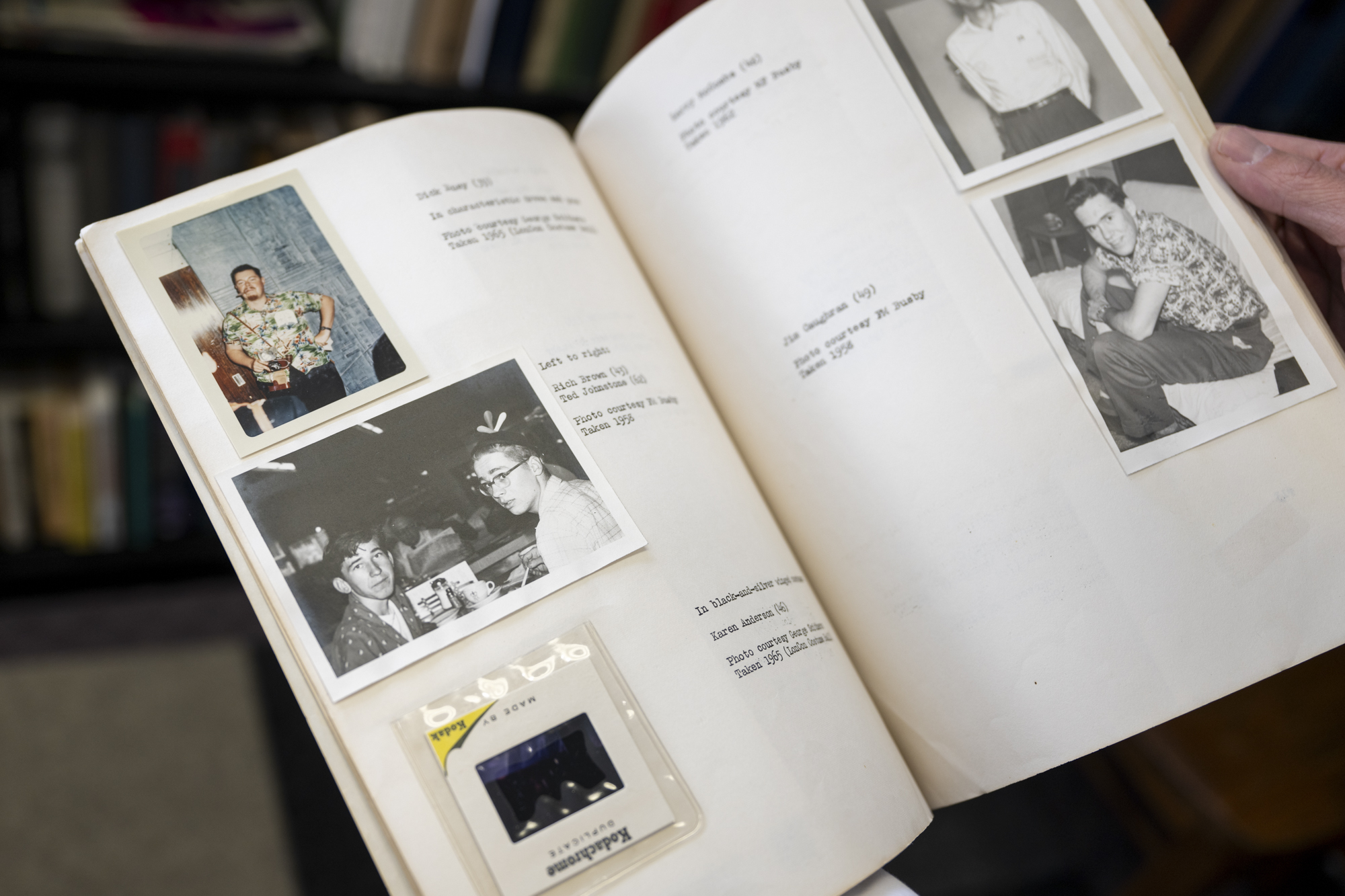
A sci-fi stash
Last November, a tip led Funke to the former home of three well-known people in the world of science fiction. Terry Carr, the editor who published Le Guin, Alexei Panshin, John Brunner and many others, had lived there with his wife Carol Carr, a science fiction author in her own right. After Terry’s death, the house further accumulated the belongings of Carol’s second husband Robert Lichtman, another science fiction writer and an avid fanzine collector. (Carol died in 2021, Lichtman in 2022.)
Funke worked with a trustee in the Carr-Lichtman estate to acquire all the papers of the house — which make up 127 boxes currently housed in Funke’s office. Some of these materials will also be on view at the Antiquarian Book Fair.
But acquiring the painting, which belonged to the Carr-Lichtman estate, took time, Funke says.
“It’s only months later, after communication with various auction houses and other parties, that we worked out a deal,” he says.
“If you separate the painting completely from the archives — I don’t want to say it loses value,” Funke adds, “but the idea that I have these memos which talk about the painting is amazing, and so they fit together.”
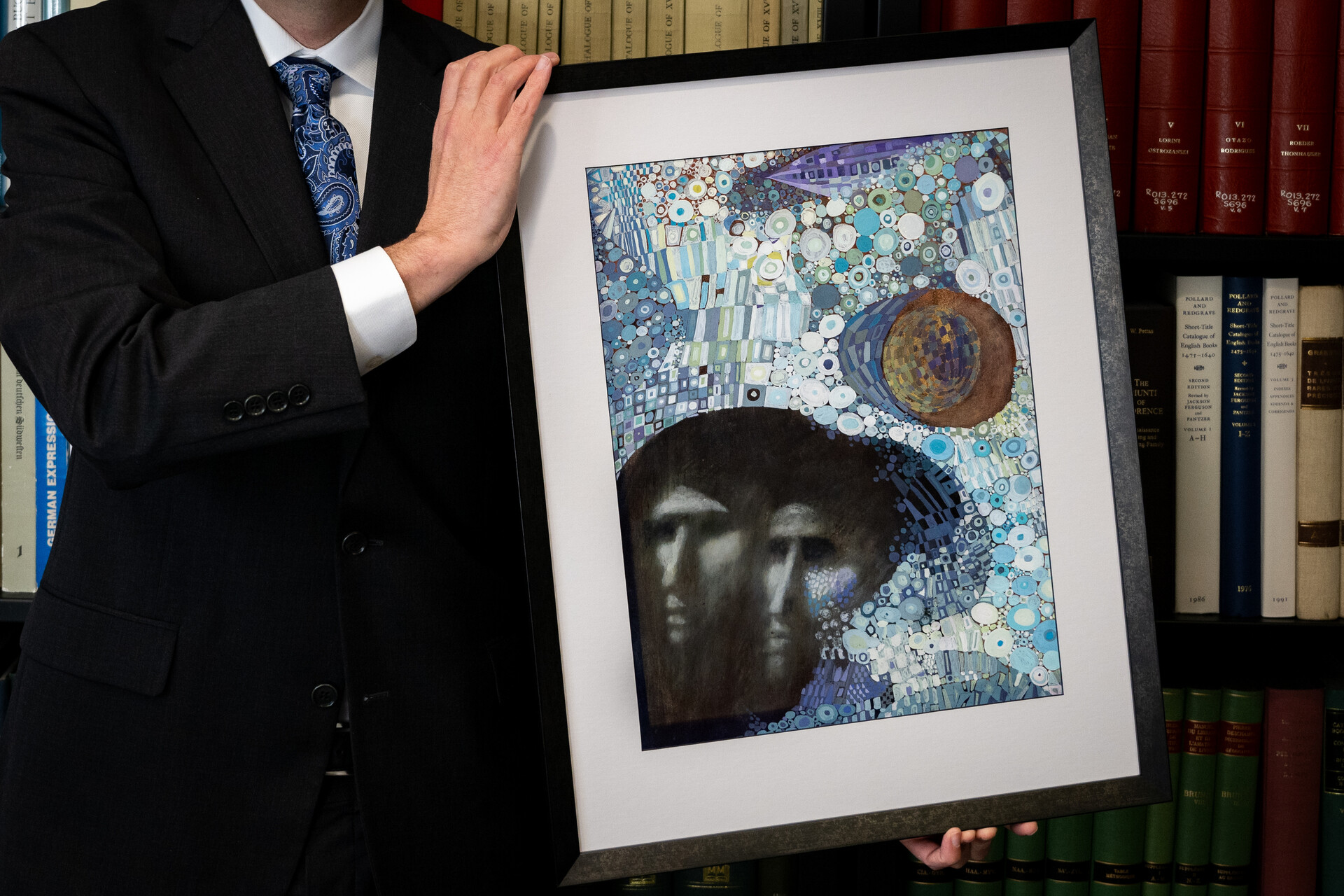
Commissioning an iconic cover
In the late ’60s, Ace Books was working on the launch of a new series, the Ace Science Fiction Specials. This collection of 40 titles was meant to highlight a “new wave” of science fiction authors — including Le Guin — who wrote stories that dealt with not just rocket ships, but with class, gender and race.
“It was science fiction that moved away from the pulpy space adventures, aliens and laser guns-type stories and conflict-based stories, specifically, of earlier in the century,” says Phoenix Alexander, the science fiction librarian at UC Riverside, which has one of the country’s largest collections of the genre.
According to a 1967 memo to Aaron. A. Wyn, the founder of Ace Books, editor Terry Carr advocated for the Dillons for their “imagination and a readily recognizable style — plus a good knowledge of the science fiction field.” (The Dillons had previously done illustrations for the sci-fi magazine Galaxy.)
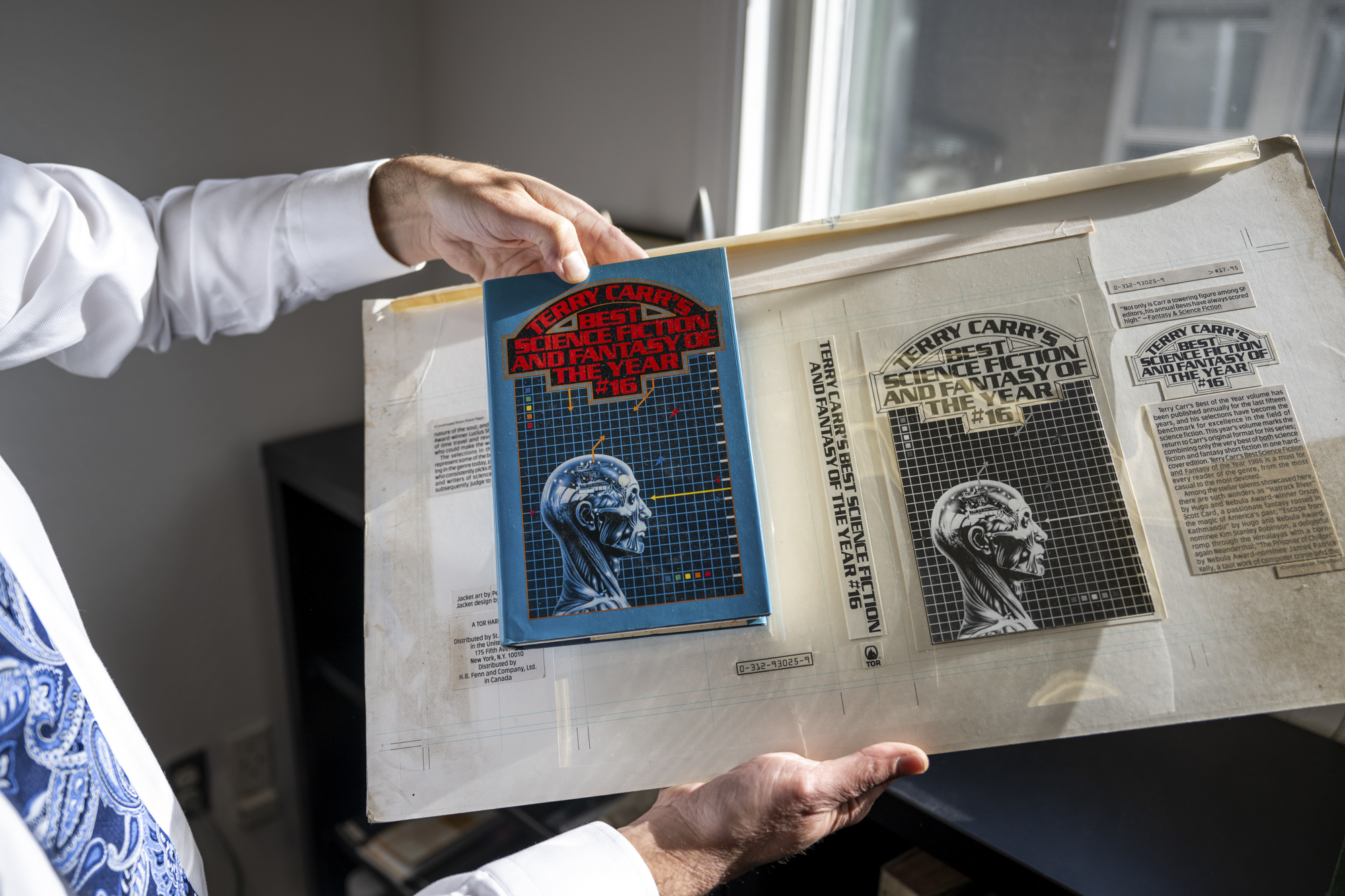
In the same memo, Carr also argued that science fiction readers would buy the books regardless, but the Dillons’ involvement in the “packaging” would entice a larger audience, “who seldom read science fiction because it looks too childish.”
The first edition of The Left Hand of Darkness, a paperback featuring the Dillons’ cover art, was released in 1969, and Carr was so protective of the design, he refused to let it be reproduced on the book’s hardcover edition.
“I balked at letting them use the cover art by the Dillons because Dillon covers are now associated in the science field with the specials and I want it kept that way,” said Carr in a 1968 memo to Virginia Kidd, Le Guin’s agent.
The Dillons went on to design several more covers in the first series of the Ace Science Fiction Specials, and over the years, they continued that kind of work for authors like Ray Bradbury and Isaac Asimov.

The Dillons’ ‘third artist’
Diane Dillon says science fiction writers inspired some of their best work. Leo introduced her to the genre when they met as students at Parsons in the ’50s. They were drawn to sci-fi’s imaginative worlds and the promise of what could be possible.
“Science fiction, fantasy and myth gave us the freedom to invent and challenge our imagination,” Diane wrote via email.
In a 2000 interview, Leo said he and Diane wanted their illustrations to “take science fiction out of that spaceship-and-craters-on-the-planet look.” (Leo died in 2012.)
In the case of The Left Hand of Darkness, the Dillons drew inspiration from Gustav Klimt. The original 24-by-19-inch acrylic painting evokes an uncanny world. Two figures with blurry features melt into a muted luster — an allusion to the icy planet of Gethen that provides the setting for the novel.
“That’s a sprawling piece, and it says volumes in just that one image,” says Paul Gulla, manager of R. Michelson Galleries, which represents the Dillons, in Northampton, Massachusetts.
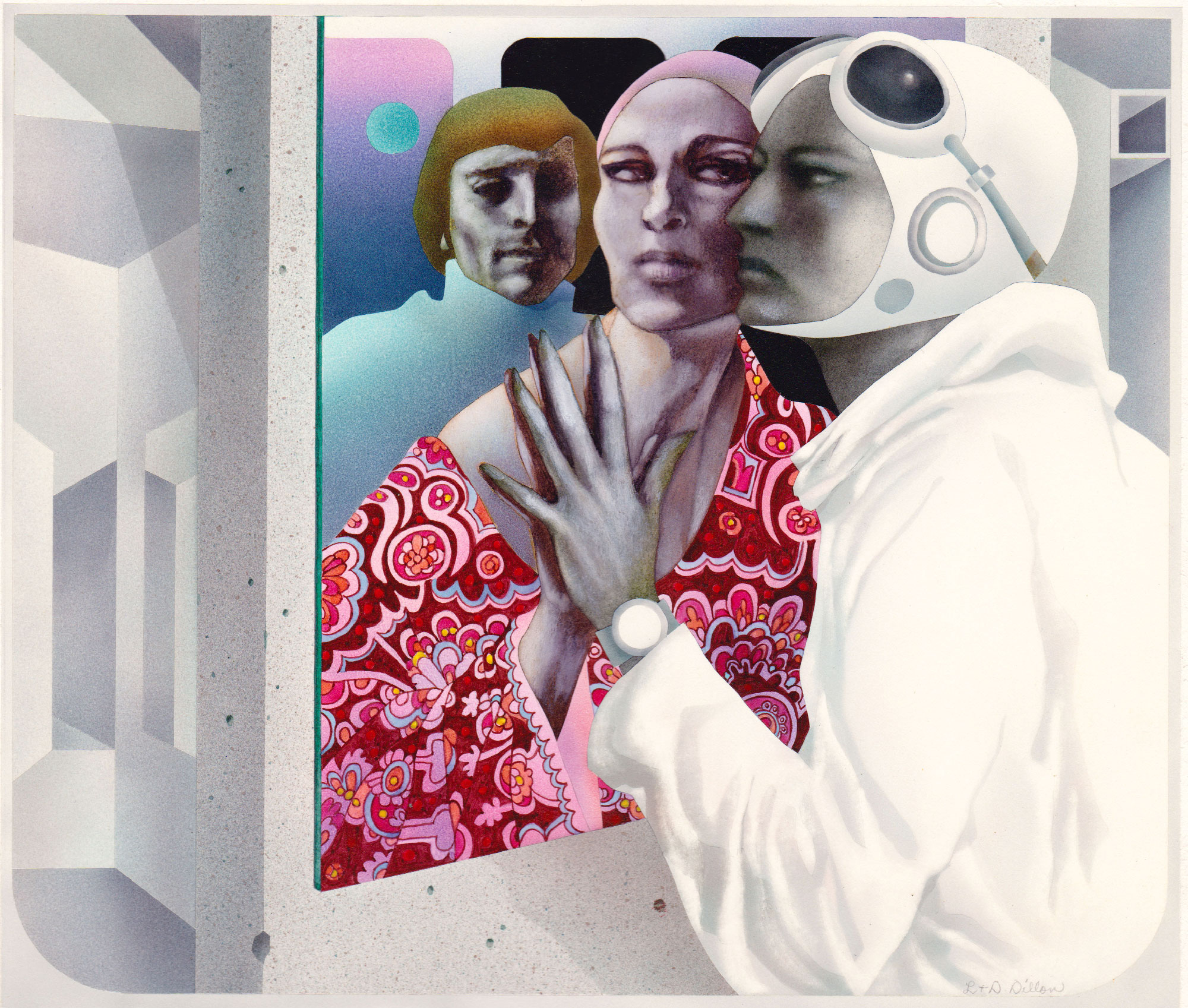
The Dillons’ work was recognizable, but the duo enjoyed experimentation. They used various techniques and materials — including stained glass, woodcarving and clay — throughout their decades-long career, which spanned book covers, album covers, kids’ picture books and advertisements.
The Dillons even forged a new artistic identity. They described their collaboration as a “third artist,” drawing on the combined powers of their own individual styles.
For Pat Cummings, a writer, illustrator and Parsons professor, the Dillons stand out not just for their talent but also for an “intuitiveness” for narrative.
The Dillons, she says, wanted “the reader or the viewer to feel the story, to feel what’s going on there, to smell the smells and feel the sensations.”
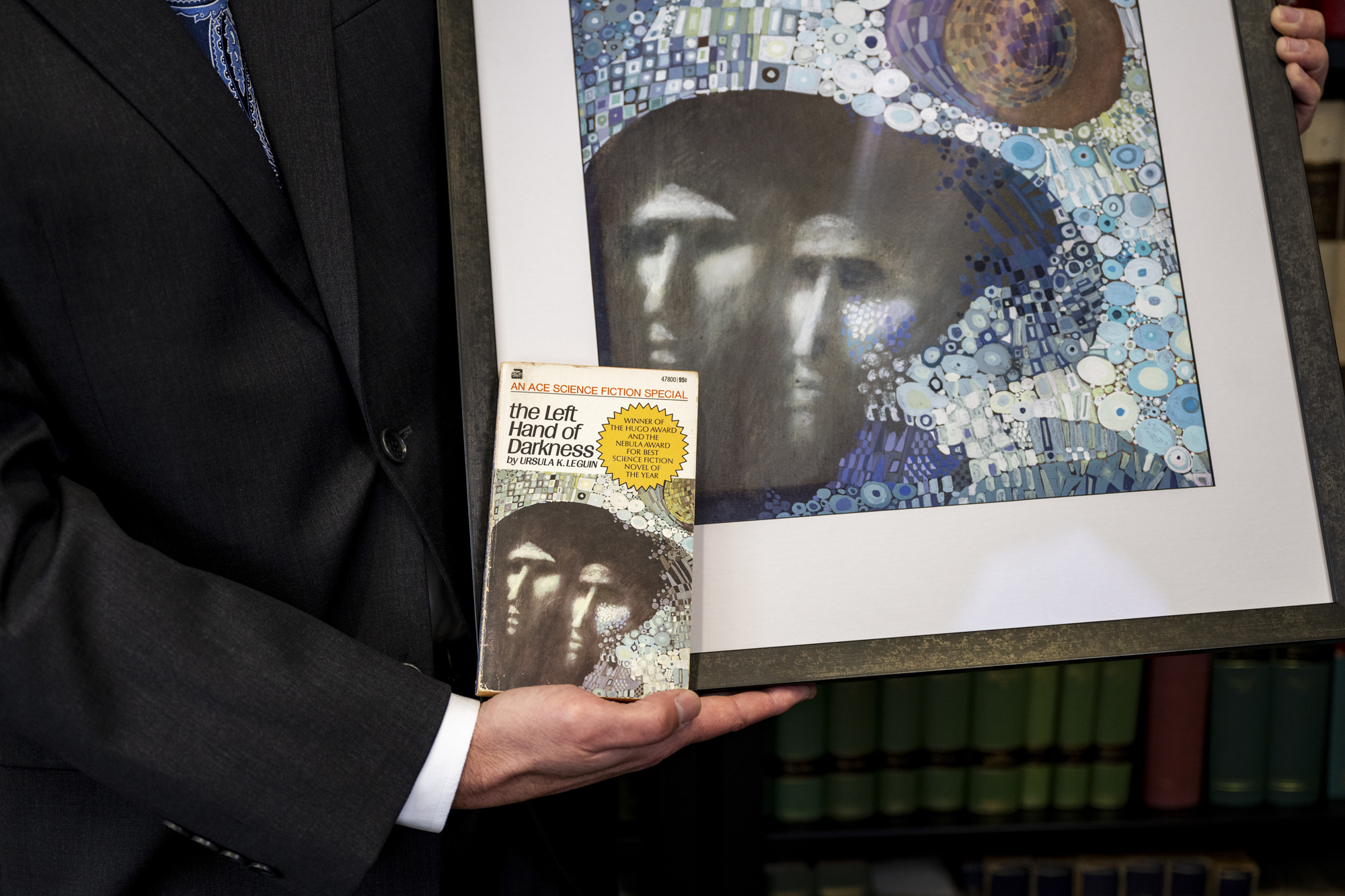
‘Cover art is art’
Jessica Jordan, a doctoral student in English at Stanford, says she’s always been drawn to the Dillons’ art. So much so that she embarked on a personal project to catalog a bibliography of their works. It’s no small feat given how prolific they were.
“There’s a whole lot of work that they did that is not very well documented. They did covers for Shakespeare, Canterbury Tales, all kinds of things, over many decades. And that’s not registered anywhere,” says Jordan, whose effort won her the 2021 National Collegiate Book Collecting Contest.
As a researcher in book history and a former bookseller, Jordan thinks a lot about book production. She appreciates the Dillons in part because they represent a different era in publishing — one in which commissioning fine artists to design book covers was more common.
“Cover art is art,” she says. “It used to be just part of how books got made.”
Jordan has her own copy of the 1969 paperback of The Left Hand of Darkness and plans to attend the Antiquarian Book Fair to see the piece for herself.
“As much as I love the Dillons, I have only very occasionally gotten to see the originals of their work,” she says.
The fair likely won’t be the last chance to see the piece in person. Funke has sold the work to UC Riverside for $20,000 (among the highest amounts paid for a work by the Dillons). He also says the university has agreed to buy some of the related papers from the Carr-Lichtman estate, keeping the history of this fortuitous intersection intact.
“The image is not what you might specifically associate with science fiction,” says librarian Phoenix Alexander. “It might change people’s perspective of what science fiction is and who it’s for.”

The Antiquarian Book Fair takes place Feb. 9–11 at Pier 27, San Francisco.
A note to our readers: KQED is a sponsor of the Antiquarian Book Fair. Newsroom staff decide editorial coverage independent of sponsorship opportunities.